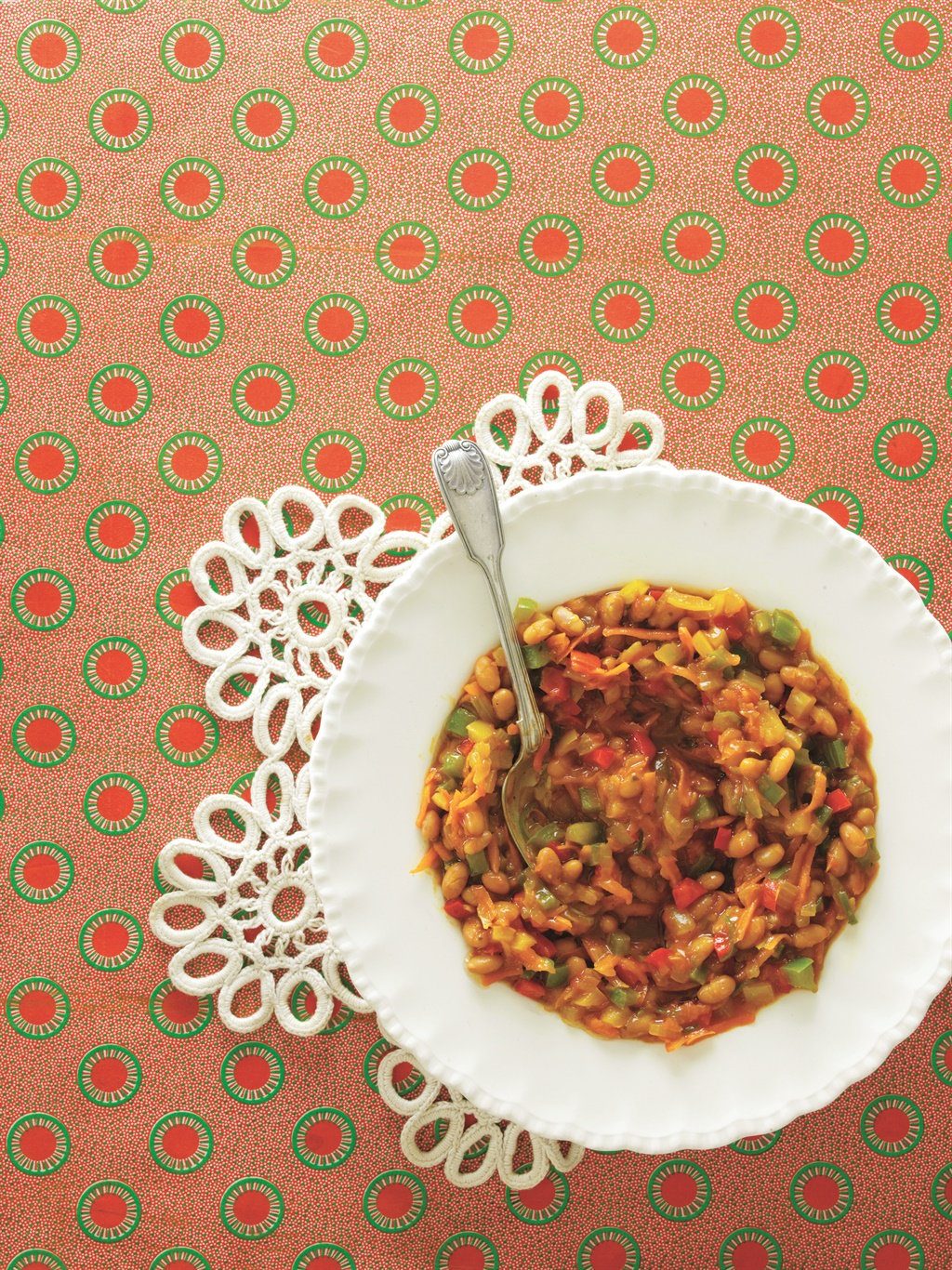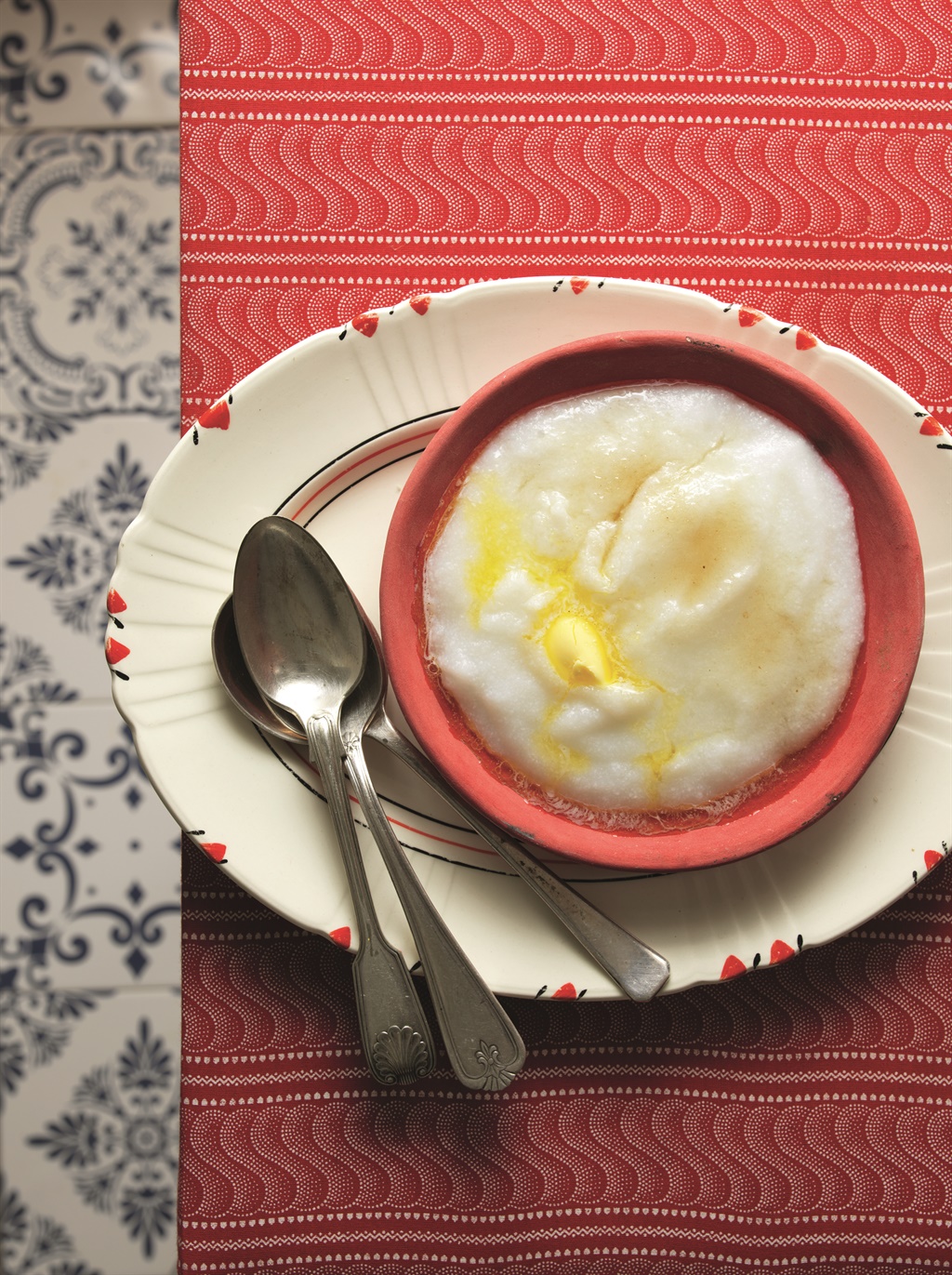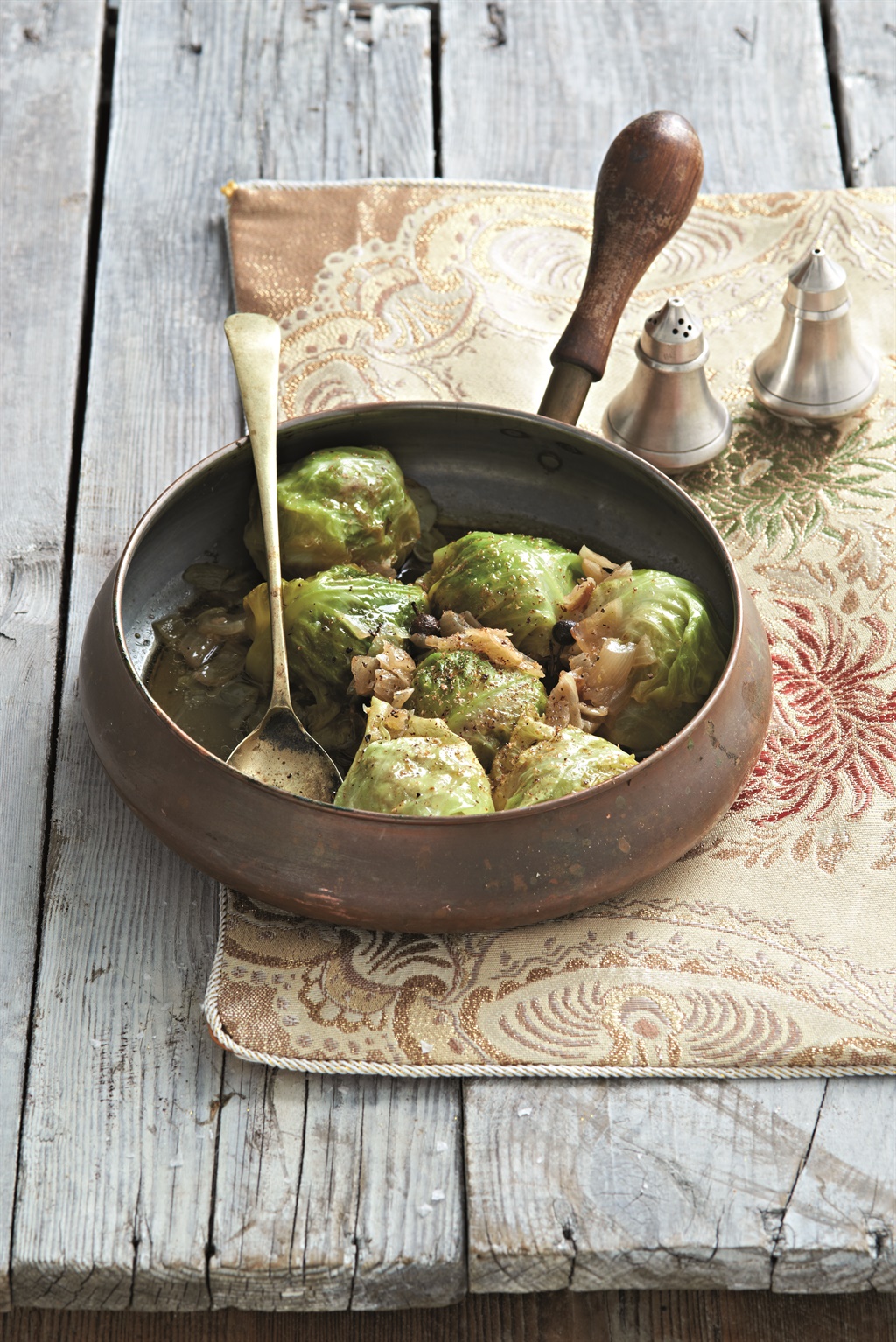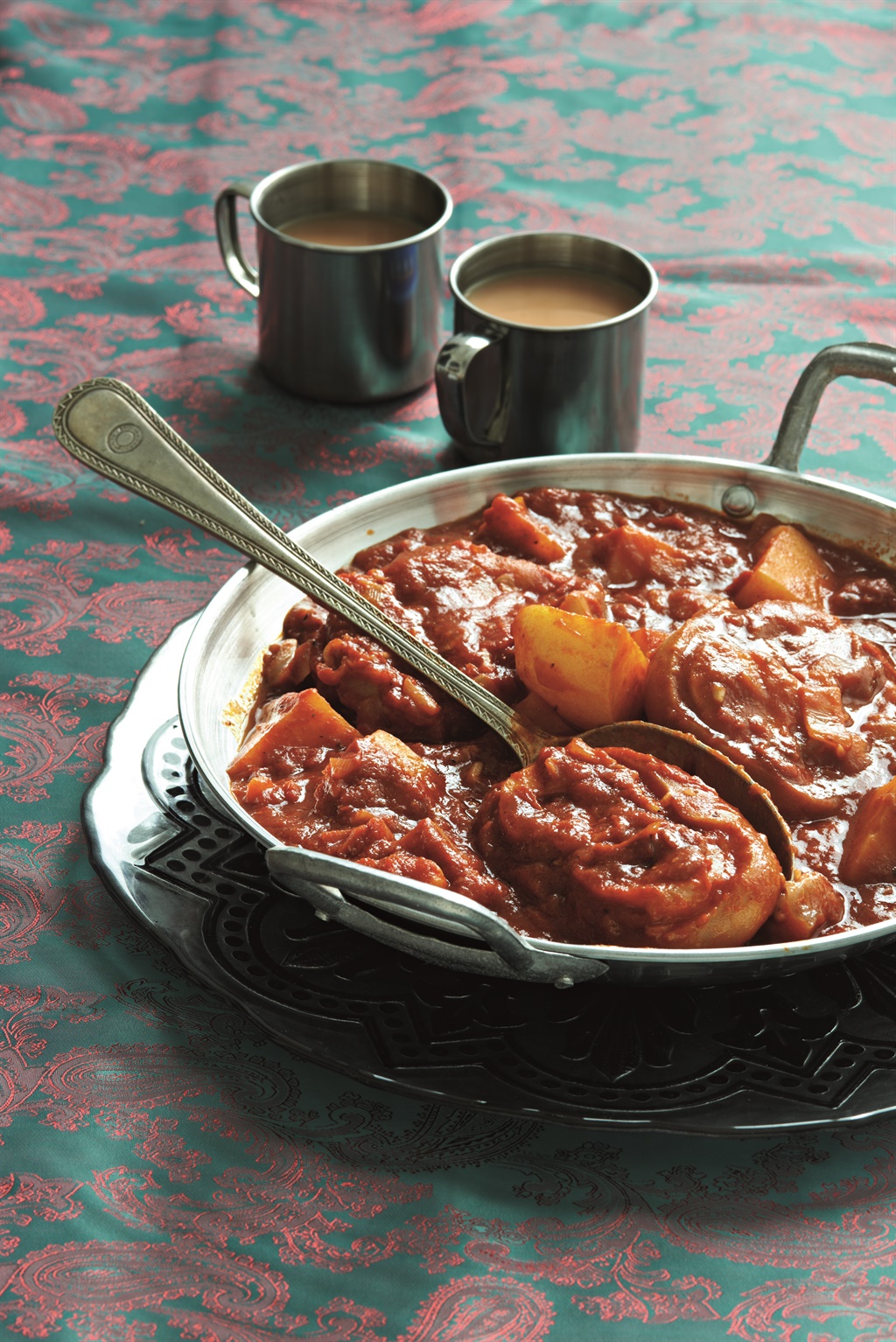
Tuesday is Heritage Day, and it seems that the only culinary heritage we ever focus on during this time is braaing. The truth is, our dishes and ingredients are unique and diverse, and it’s high time we celebrated that. Anna Trapido presents a delicious guide to South Africa's food.
We are what we eat and South African cuisine is deliciously diverse. Our multicultural ingredients, cooking techniques and recipes are infused with indigenous and imported elements.
Urban and rural, ancient and modern, hyperlocal and superglobal expressions of our edible identity are served from our pots. Clearly such culinary complexity merits a comprehensive epicurean encyclopaedia so, the one entry per letter offered below cannot do justice to our food. Some letters are superfoodie – it was agony picking the bunny chow over biltong, braai and bogobe. Others offer slim pickings. Consider what follows to be a small sample of our appetising alphabet …
Amasi: the isiZulu and isiXhosa word describes fermented milk traditionally prepared in a calabash. Amasi is most commonly consumed either as a beverage or with pap. It is known as madila in Setswana.
- Also: Aardappel porring, amabele, amadumbe, amanqina, amarhewu, amatangulu berries, Amarula, asynpoeding
Bunny chow: Durban Indian diaspora-style curry packed into a hollowed-out whole, half or quarter loaf of white bread which acts as an edible container. The word bunny is probably derived from the Gujurati word bhania, which refers to the trader class people who first sold such sandwiches.
The portable bread shell evolved to circumvent colonial convention and later apartheid legislation in the hospitality industry which prevented those of different races from eating together. Kota, spathlo and skumbani are similar sandwiches made from hollowed-out bread but filled with a variety of meats, chips, cheese and atchar.
- Also: Baleni salt, baobab, biltong, bjala marole, blatjang, bobotie, bogobe, boeber, boerewors, boereboontjies, braai, braai-broodjies, brannewyn tertjies, bredie, briyani
Chakalaka: A spicy mixed vegetable relish that usually contains onions, green peppers, carrots, baked beans and tomatoes. The word is first recorded in descriptions of Sophiatown shebeen cuisine of the 1940s where it is described as an African adaptation of Indian atchar.
- Also: Chisa nyama, chuchuza, Cremora tart
Dinawa: Sepedi term for vigna unguiculata heritage beans also known as akkerboom in Afrikaans, cowpea in English and imbumba/ isihlumaya in isiZulu. Leaves of the same plant can be cooked as green vegetables or combined with the beans as morogo wa dinawa. Beans are also combined with maize meal in recipes such as dinawa tša semothwane.
- Also: Delele, denningvleis, dikgopana, dombolo, Don Pedro, diphaohata, dithotse, ditšie locusts
Encosternum delegorguei: scientific name for thongolifha (Tshivenda)/ stinkbug (English). Harvested during winter in Limpopo, sun-dried or fried and salt-tossed by Venda cooks.
- Also: Ekukanyeni Zulu maize
Frikkadel: Afrikaans term for baked (sometimes fried) beef meatballs prepared with onion, milk-soaked bread, nutmeg and allspice. See also oumens onder die kombers.
Gatsby: A street sandwich which originated on the Cape Flats. It is made from bisected, flattened, wand-shaped bread stuffed with any combination of meat, melted cheese, fried eggs, chips and pickled chilies.
The name is thought to refer to the flat cap worn by Robert Redford in the film of F Scott Fitzgerald’s book of the same name – which is said to resemble the sandwich. Sometimes referred to as an AK in Gauteng.
- Also: Geitenmelk, gemmer ginger beer, ghoenavy, Gonimbrasia belina (mopani worms)
Hertzoggies: This apricot jam and coconut biscuit was named after JBM Hertzog, prime minister of the Union of South Africa from 1924 to 1939. It exists in two forms.
In the version that is generally made by white Afrikaners the coconut topping is said to resemble the politician’s beard.
The second, Cape Malay version of the Hertzoggie is also known as Twee Gevreetjie, which translates as two-tone / two-faced and has a layer of bicoloured pink and brown icing. The name refers to the 1929 South African election campaign when Hertzog implied that he would enfranchise all Cape Malay people and then, once in power, did not.
Inkukhu yesintu/ inkuku yasekhaya: IsiZulu terms for heritage breed and/or free-range chickens. Tougher but more flavoursome than industrially farmed chicken. Chicken pieces are generally placed in water and simmered long and slowly until the meat is soft and all the water has evaporated. In the final stages of the process the chicken skin will brown as it fries in its own fat. Cooking a traditional chicken for a visitor is considered to be a demonstration of love and hospitality.
Also known as hardbodies, koko ya Setswana, nama ya kgogo ya Sesotho, umleqwa in isiXhosa and mukokoroxi in Xitsonga.
- Also: Ice pops / ice block, inhloko, imbuzi, imfino, ingelegde vis (pickled fish), inqebengwane, irude, isibindi, isidudu, isijingi, isophu yombona
Jodetert: Despite its name this tower of stacked biscuit / cake tower with thick custard filling is most commonly made by Afrikaner bakers in the Free State and not people of the Jewish faith.
The recipe is strikingly similar to a Russian honey cake known as medovik and in Yiddish as schmeten torte, so it seems likely that early-mid 20th century boerejode (South African Jews living in rural Afrikaner communities) of Russian ancestry introduced this delicious dessert to the region.
Karoo lamb: Foodie folklore has always argued that lamb and mutton from the Karoo region have terroir-specific distinctive and desirable herby flavours and aromas.
The good news is that it is true. A recent study of the sensory profiles of mutton from different regions of South Africa conducted by the Agricultural Research Council found that there were indeed discernible differences in the flavour attributes of mutton from the Karoo region. For many urban South Africans, each aromatic mouthful also comes seasoned with a nostalgic longing for wide open spaces, big hearted people and calm in a complicated world.
- Also: Kip-kip, kgobe-kgobe, kifyaat kos, koeksister, koko ya Setswana chicken, Kolbroek heritage pig, koperpennie slaai, kota, krummelpap
Lerotse: Setswana term for an indigenous melon (Citrullus lanatus) also known as bitter melon (English), makataan (Afrikaans), ityambotyi (isiXhosa) and ibhece in isiZulu. Leaves and young fruit are utilised as green vegetables. The roasted seeds are used as a snack. The juice can be fermented. Fresh flesh generally cooked into porridge (for example Batswana-style bogobe jwa lerotse). Fruit also used for making jam.
- Also: Langsouskos, lepu
Motoho / umdoko: Basotho-style sour porridge generally made with fermented sorghum (occasionally used to refer to fermented maize porridge). Also called ting (Setswana) and mukapu wa mutuku in Tshivenda. Unfermented motoho is called lesheleshele – in some parts of South Africa, lesheleshele is thought to be food for babies and young children. In such places, giving an adult lesheleshe can be an insulting gesture.
- Also: Mala mogodu, malva pudding, marula fruit and nut, maotwana, masapo, melktert, mopani worms(mašotša/ mashonzha), mokopana (horned cucumber), monkey-gland sauce, motsukubele, mukokoroxi
Nguni cows: Sanga-type, Bos Indicus heritage cattle. Archaeological evidence shows that this breed has been in Southern Africa since at least 600AD. Many consider them to be more sustainable than imported European cattle breeds which require large quantities of antibiotics to survive in an environment to which they have not adapted.
Nguni meat is of exceptional quality; generally tender with creamy yellow marbling.
Although the Nguni cow is not recognised as a milk breed, the milk is also of high quality. Nguni cattle play a significant economic, social and spiritual role in many Southern African societies.
- Also: Naartjie, nama ya kgomo, nastergal berries, num num berries
Oumens onder die kombers (old people under the blanket) Afrikaner and Cape Malay cabbage leaf wrapped variant with a frikkadel.
Potchefstroom: Gauteng township term for flat, biscuit-like baked treats served at large gatherings, especially funerals. The name is said to be a reference to the Chris Hani / Baragwanath Hospital in Soweto which is on the Old Potch Road and is used to suggest that those who enter the hospital leave ready for their funeral biscuits. Also known as scones, dikuku and maskhosana. Not to be confused with the raised baked good known as scones elsewhere in the world.
- Also: Pampoen koekies, pannekoek, pap, pens, peppermint crisp tart, peri-peri (as opposed to Mozambican piri-piri), pinotage, pofadder wors, potjiekos
Qhumatana: Xhosa style sorghum, bean and maize melange. It was traditionally considered ideal for those working in the fields because the protein and carbohydrates combination digests slowly, thus keeping people full for a long time. Modern dieticians call that a low glycemic index.
Russians: Mass-produced, fine-textured and highly seasoned, generally smoked sausages. Often deep fried and served inside kota/sphatlo sandwiches as street food. The word probably has its ancestry in the Eastern European-style kolbasa/kielbasa (sausage) sold by Russian and Polish shopkeepers in the 19th and early-mid 20th centuries “native trading stores” across the country.
- Also: Rex union orange, runaways
Sandkool: (Trachyandra divaricata) an indigenous plant that grows wild in sandy soils along the Cape West coast. Its succulent, fleshy leaves are accompanied by plump, juicy flower buds. Historically foraged rather than cultivated by Khoi and San hunter-gathering peoples, both the leaves and the buds were used raw or roasted. Currently being piloted for possible commercial cultivation within community gardens in Khayelitsha, Cape Town.
- Also: Seven colours, Sebete, seno sa morula, shisa nyama, skop, skilpadjies, skrikkeljaar poeding, skumbani, slaptjips, slaphaksteentjies, smiley, smoorsnoek, snoek, soetpatats, sosaties, sourfig konfyt, spekboom, sphatlo, suring
Tšhotlho: (literally Bakgatla for that which has been chewed) a pulled/ shredded/ pounded slow-cooked meat (often beef shin) commonly made for funerals in Batswana communities. Bangwato instead call pounded meat seswaa (the thing that pounds).
- Also: tamatie bredie, tameletjie, thepe, thongolifha, tihove, ting, tlhakwana, tshidzimba
Ujeqe wombila: Zulu-style maize bread steamed in the maize leaves.
- Also: Uluso, umhluzi, umleqwa, umngqusho, umphokoqo, uphutu, umsila wenkomo, umsobo berries, umqombothi, umxhanxa
Vetkoek: Afrikaans term (literally means fat cake) for deep-fried dough balls. Traditional fillings include mince, syrup and jam. Stuffed variants sometimes referred to as “ope bekkies”. Township variation known as magwinya are generally slightly smaller and often sold by street hawkers.
- Also: veldkool, vuswa bya nwa huva
Walkaways: Cape Malay ox-trotters cooked in spiced tomato gravy and served as an Eid treat. Also known as tomato pootjies.
- Also: Waterblommetjie, waterblommetjie bredie
Xigugu: A Tsonga roast corn and peanut snack that can be seasoned with salt, sugar or spices. It is generally a seasonally specific treat made from December to February following the harvesting and drying of the corn and peanuts.
- Also: Xitopya, xginya xa mihlata
Yellow rice: A fragrant and colourful staple of Cape Malay kitchens. Infused with turmeric, cinnamon, butter and sometimes sugar. Eaten as an accompaniment to curries and casseroles.
Zulu Rainbow Maize: (also known as Ekukanyeni Zulu maize) a multi-coloured heirloom corn variety, grown in South Africa prior to the advent of 20th century mono-cropped intensive agriculture and 21st-century genetic modification. Originally from the Americas, it arrived in southern Africa in the late 15th/ early 16th centuries with Portuguese traders. The variety is seldom grown commercially, instead it has been preserved and passed down by South African subsistence farmers for generations.
- Also: Izoso
RESPONSIBLE FEASTING
Some vegetable varieties or animal breeds are made economically viable by consumption.
Others are so rare that harvesting, hunting or buying them must be avoided in order to allow the surviving specimens time to recover.
The national list of threatened or protected species indicates those local ingredients that ought to be left uneaten.
- Find the list at http://redlist.sanbi.org/ and http://www.daff.gov.za/




 Publications
Publications
 Partners
Partners








 Photo: Malcolm Drummond
Photo: Malcolm Drummond



